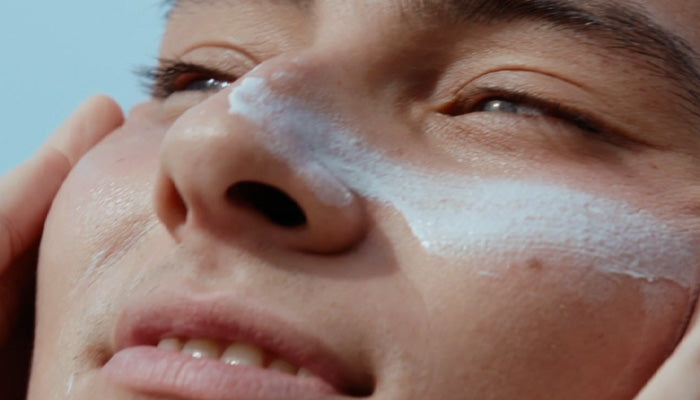story highlights
Not all sunscreens are created equal. To find the best formula for you, pay attention to the labels.
Your skin is exposed to UV radiation every day, whether you're indoors or out. Wearing a generous amount of sunscreen daily helps protect your skin from premature signs of skin ageing, as well as skin cancer.
Healthy, smooth, even-toned skin – and good health – are the trade-offs for golden tans and too much time in the sun. Surprisingly, many people who think they are protecting themselves are unfortunately following outdated, inaccurate advice that jepordises their long-term skin health. Let's go over some of the things you should know when it comes to protecting your skin from sun damage.
1. Will my sunscreen protect me from UVA (ageing) and UVB (burning) rays?
Applying any old SPF product won't keep skin safe from both types of harmful UV rays/ Look closely at the labels and ingredients of the chemical or physical sunscreen you buy.
The SPF (Sun Protection Factor) number indicates how long it takes for skin to redden (start to burn) from UVB rays. For example, SPF 15 means it will take 15 times longer for skin to redden with the product on than without it. UVA rays (the same ones emitted by tanning booths) penetrate the skin more deeply, accelerate the signs of skin ageing, and generate skin cancer.
To protect your skin from both UVA and UVB rays, don't just buy a product with an SPF of 15 or higher. Make sure it is labeled "Broad Spectrum." Broad Spectrum SPF contains a combination of ingredients known to protect skin against both types of UV rays. Chemical sunscreens like Avobenzone, absorb ultraviolet (UV) radiation, while physical sunscreen (Titanium Dioxide, Zinc Oxide) reflect or scatter it.
2. Should I choose a chemical or physical sunscreen?
It's a matter of preference.
Chemical sunscreens absorb into the skin and are usually more popular because they feel lighter and look less noticeable. They use active ingredients like Avobenzone and Oxybenzone. Try a chemical sunscreen like Prisma Protect SPF30, a light-activated multitasking moisturiser that provides broad spectrum defence while preventing future signs of skin damage.
Physical sunscreens, or mineral sunscreens, sit on the surface of the skin. They can sometimes feel heavier and look more noticeable, but they provide added coverage. Look for active ingredients like Zinc Oxide and Titanium Dioxide to identify them. Try Porescren SPF40, a multitasking physical sunscreen with SPF 40 protection that supports healthy-looking pores, and minimises their appearance with a blurring, primer-like effect, while enhancing skin tone with a hint of tint.
Learn more about the difference between physical and chemical sunscreen here.
3. Will a base tan protect me from the sun?
There is no such thing as a safe tan. By definition, a suntan is your skin's defence to being harmed by UV exposure. Your cells respond to the affront by producing more melanin (pigment), and your skin darkens as a result. There is nothing healthy or preventive to be gained from trying to acquire a base tan.
4. Is sunscreen required just in Summer?
Sun damage doesn’t just happen during the summer months or while at the beach. Photo damage or UV exposure (which causes aging) can occur from exposure to daylight through clouds, rain, glass and even fluorescent indoor lighting. Roughly 90 percent of photoageing is preventable by wearing SPF daily.
And, while daily sun care is an obvious must, it shouldn't come at the expense of your skincare benefits! All Dermalogica sunscreens go beyond just defence to deliver these benefits, finding the right SPF formula for your skin and routine can level up your entire skin care regimen.
5. Am I using enough sunscreen?
Probably not! Creams and lotions tend to deliver better protection than sprays. The prescribed amount you should be applying is also a lot more than many realise. The Australian Cancer Council recommends at least one teaspoon of sunscreen for your face, and an additional teaspoon per limb. Sunscreen should be applied 20 minutes before going outside and should be reapplied every two hours when you're spending time outdoors. You may need to reapply more often if you have fairer skin, and should reapply after swimming, sweating or towel drying.
6. What is the difference between SPF30 and SPF50?
This is a very common question, and it comes down to the actual formulation of sunscreen you prefer to use. Though it may sound like there is a big difference between SPF30 vs SPF50, there is actually only approximately a 1.3% difference in the level of filtering UV radiation. SPF30 filters about 96.7% of UV and SPF50 filters about 98% of UV, when used as directed.
In Australia, our standards of SPF regulation are some of the strictest in the world, which means as long as you're wearing a minimum of SPF30 during the day, you can be assured you are receiving ample sun protection.
Find the right sun protection for your skin here or chat to an expert online now

